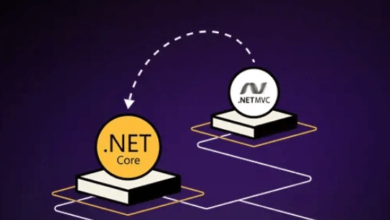Top Features of .NET 7: What Developers Need to Know in 2024

Microsoft’s .NET 7 release has brought a wave of improvements, enhancements, and new capabilities designed to optimize the development process. As the latest iteration in Microsoft’s unified .NET platform, .NET 7 builds upon the groundwork laid by .NET 5 and .NET 6, offering increased performance, cross-platform support, and enhanced developer productivity. Whether you’re building web apps, cloud services, desktop software, or mobile applications, .NET 7 provides a versatile and powerful framework to streamline your development process.
In this article, we dive into the top features of .NET 7 that every developer needs to know about, and how they can transform your projects in 2024 and beyond.
1. Introduction to .NET 7
Microsoft’s .NET 7 is the latest release in the unified .NET ecosystem, continuing the vision that started with .NET 5 to unify the .NET Framework, .NET Core, and Xamarin into a single, cross-platform solution. The goal of .NET 7 is to empower developers to build high-performance applications efficiently, regardless of the target platform—whether it’s Windows, macOS, Linux, iOS, or Android.
See also: Understanding the Basics of the .NET Framework: A Beginner’s Guide
2. Why .NET 7 is a Game-Changer for Developers
.NET 7 focuses on performance optimization, cross-platform capabilities, and developer productivity. By building upon the successes of its predecessors, .NET 7 provides improved tools and features that make development faster, easier, and more efficient. Its support for modern cloud-native applications, along with the latest updates to C#, makes it a compelling choice for developers in 2024.
3. Top Features of .NET 7
Unified Platform Enhancements
One of the most significant advantages of .NET 7 is its unified development platform. This means that developers can use a single framework to build applications for various platforms, eliminating the need to switch between different technologies. With .NET 7, you can create applications for:
- Web (ASP.NET Core)
- Desktop (Windows Forms, WPF)
- Mobile (using .NET MAUI)
- Cloud and microservices
- IoT and embedded systems
Improved Performance and Speed
Performance has always been a priority for .NET, and .NET 7 continues to push the boundaries. According to Microsoft, .NET 7 is the fastest .NET release yet, with optimized JIT (Just-In-Time) compilation, improved garbage collection, and enhanced memory management. These enhancements translate to faster application startup times and reduced latency, especially for web and cloud applications.
Native AOT (Ahead-of-Time Compilation)
The introduction of Native AOT (Ahead-of-Time) compilation in .NET 7 allows developers to compile applications into self-contained executables. This means:
- Faster startup times: Applications run immediately without waiting for JIT compilation.
- Smaller binaries: Reducing the application’s footprint, which is ideal for microservices and containerized environments.
- Better performance: Especially for applications with high-performance requirements.
Simplified .NET MAUI for Cross-Platform Development
With .NET 7, .NET MAUI (Multi-platform App UI) has been further streamlined, making it easier to build cross-platform mobile and desktop applications using a single codebase. New features include:
- Hot Reload: See changes in real-time without restarting the application.
- Single Project Structure: Simplifies managing cross-platform projects.
- Support for .NET MAUI Blazor apps, allowing developers to embed Blazor components within native mobile applications.
ASP.NET Core Enhancements
ASP.NET Core has received a suite of updates in .NET 7:
- Minimal APIs: Introduced in .NET 6, now further enhanced for lightweight web APIs.
- Improved WebSockets support: Enabling real-time communication for web apps.
- HTTP/3 support: For faster, more efficient web application performance.
- gRPC performance improvements: Optimized for high-performance microservices communication.
C# 11 Features and Updates
.NET 7 introduces support for C# 11, which comes with a host of new language features:
- Raw string literals: Making it easier to work with multi-line strings.
- Generic attributes: Simplifies the use of generics with attributes.
- Static abstract members in interfaces: Enhancing polymorphism capabilities.
- File-scoped types: Simplifying file structures for cleaner code.
Enhanced Cloud-Native Development with Containers
.NET 7 enhances support for cloud-native applications by optimizing containerized workloads. Key improvements include:
- Smaller container images: Reduced size for faster deployment.
- Built-in support for OpenTelemetry: Easier monitoring and logging of cloud applications.
- Improved Kubernetes integration: Simplified management and deployment of microservices.
Blazor Updates for WebAssembly
Blazor, Microsoft’s popular framework for building web applications, continues to evolve in .NET 7:
- Faster WebAssembly loading: Leading to better performance for Blazor WebAssembly apps.
- Improved JavaScript interoperability: Enabling better integration with existing JavaScript libraries.
- Server-side rendering: For faster initial load times and improved SEO.
New APIs and Libraries
.NET 7 brings new APIs to simplify development:
- HTTP/3 API enhancements: Enabling developers to build faster and more secure web applications.
- System.Text.Json updates: Offering more efficient serialization and deserialization.
- File IO enhancements: Improved performance for file reading and writing operations.
4. Breaking Changes and Deprecated Features in .NET 7
While .NET 7 brings many new features, some older features have been deprecated or modified. It’s crucial to review the migration guide to ensure that your existing projects are compatible with the latest version.
5. How to Upgrade to .NET 7
Upgrading to .NET 7 is straightforward:
- Install the .NET 7 SDK: Download it from the official Microsoft website.
- Update Project Files: Modify your
.csprojfiles to target.NET 7. - Test Your Applications: Ensure compatibility by running tests on your projects.
- Leverage New Features: Start using .NET 7 features like Native AOT and C# 11.
6. Future of .NET: What’s Next After .NET 7?
With .NET’s annual release cadence, Microsoft is already planning for .NET 8, which will continue to focus on performance, cross-platform capabilities, and cloud integration. Expect further optimizations and new tools for modern development.
7. Frequently Asked Questions (FAQs)
Q1. What are the main benefits of upgrading to .NET 7?
.NET 7 offers improved performance, native AOT, enhanced cross-platform support, and new C# 11 features, making it ideal for modern application development.
Q2. Is .NET 7 backwards compatible with .NET 6?
Yes, in most cases. However, some breaking changes may require code adjustments.
Q3. Can I use .NET 7 for mobile development?
Yes, with .NET MAUI, you can develop cross-platform mobile apps for iOS and Android using .NET 7.
Q4. How does Native AOT improve performance?
Native AOT compiles applications into self-contained executables, reducing startup time and memory usage, making it ideal for cloud-native applications.
Q5. What IDEs support .NET 7 development?
You can use Visual Studio 2022, JetBrains Rider, or Visual Studio Code for developing .NET 7 applications.
Conclusion
.NET 7 marks a significant milestone in Microsoft’s journey to create a unified and efficient development platform. With its powerful new features, performance optimizations, and cross-platform capabilities, .NET 7 empowers developers to build high-quality applications faster and more efficiently. Whether you’re a seasoned .NET developer or new to the ecosystem, embracing .NET 7 in 2024 will keep you ahead of the curve in modern software development.



